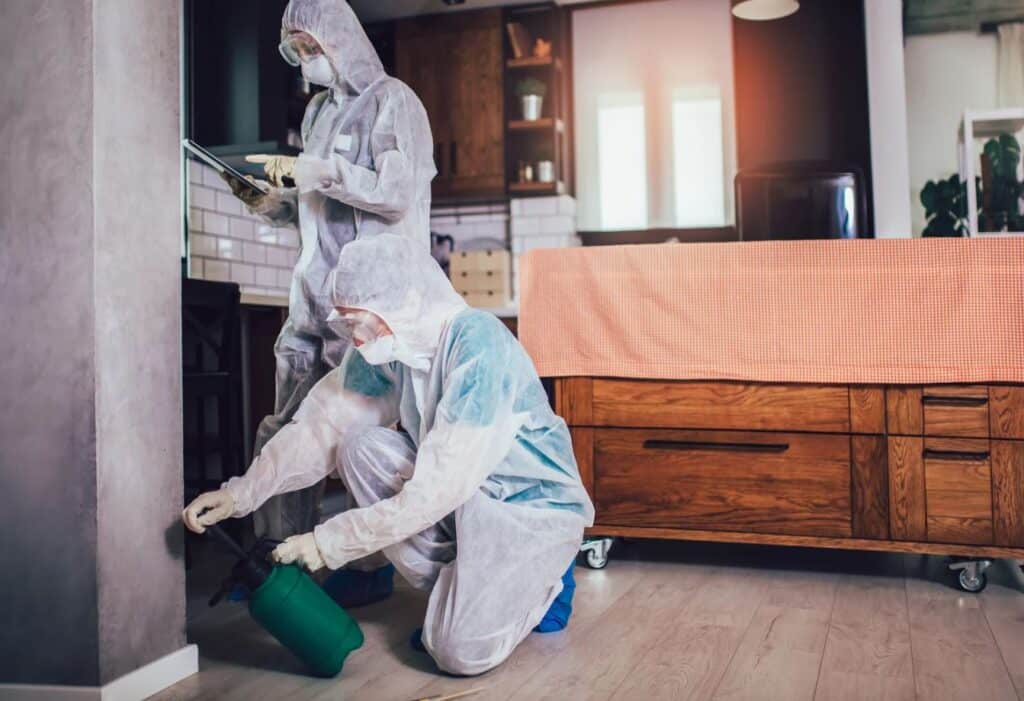How Long Does It Take for Pest Control to Work Within the Perimeter?
When dealing with pests around your home or property, one common question is: “How long does it take for pest control to work within the perimeter?” Whether you’re managing ants, rodents, termites, or other pests, understanding the timeline for effective pest control can help set your expectations. In this article, we’ll explore the initial effects of pest control, factors that influence its speed, long-term efficacy, and when to contact your pest control provider.
Initial Effects of Pest Control
The timeline for pest control to take effect depends on the pest type and treatment used. Typically, you might begin to see initial results within the first 24 to 48 hours. For example, chemical treatments like sprays or dusts can have an immediate impact, reducing visible pests or activity. If you’re using baits or traps, the process may take longer, as pests need time to encounter the treatment.
With integrated pest management (IPM), which combines multiple methods, you may notice quicker results. However, the full effect can take several days to a week, depending on the size of the infestation and the types of pests involved.
Factors Affecting Pest Control Speed
Several factors can affect how quickly the pest control methods work:
- Type of Pest
Different pests respond differently to treatments:
- Ants: Some types, like sugar ants, are easier to control, while carpenter ants or fire ants might take longer to target, especially if the queen remains alive.
- Rodents: Rodent control methods such as traps or bait may show results within a few days. However, larger infestations could take a week or more.
- Termites: These pests are harder to treat, as they live deep within wood or soil. Chemical treatments or baiting systems can take weeks to fully eradicate termites.
- Infestation Size and Severity
A larger infestation will naturally take longer to address than a smaller one. Extensive pest populations can take multiple treatments and longer periods to resolve. The size of the area being treated and the severity of the infestation both influence how quickly you’ll see results. - Treatment Method
Different treatment methods offer different speeds of effectiveness:
- Chemical Treatments: Sprays and dusts can provide immediate results, but complete eradication might take longer, especially if pests are hidden or laying eggs.
- Natural Methods: These tend to take longer to show results, as they may rely on disrupting pest behavior or introducing natural predators.
- Physical Barriers: Methods like traps, exclusion, or sealing cracks often take longer to notice results, as pests must encounter these barriers.
- Environmental Conditions
Weather can also affect pest control’s effectiveness. For example, rain or high humidity can wash away treatments, delaying results. Conversely, cold weather may reduce pest activity and lead to slower progress.
Long-Term Efficacy of Pest Control
While initial results can be encouraging, long-term pest control often requires consistent maintenance. The effectiveness of pest control treatments depends on the type used and the level of pest activity.
- Duration of Effects
Chemical treatments like sprays may provide protection for several weeks to months, but their effectiveness decreases over time. Pest populations can return if not treated again. For persistent pests like termites, long-term treatments can last several years, but regular follow-up inspections are essential. - Follow-Up Treatments
One application often isn’t enough for long-term pest control. Most infestations require follow-up treatments to ensure full eradication. Many pest control providers offer recurring services, such as quarterly visits, to maintain effective control and address any new pest activity. - Pest Resistance
In some cases, pests may develop resistance to certain treatments over time. For example, repeated use of the same pesticides may reduce their effectiveness. This highlights the importance of using a variety of treatments and techniques to stay ahead of pest resistance.
When to Contact Your Pest Control Provider
While pest control treatments typically take time to show results, there are circumstances where you should contact your provider sooner rather than later:
- Persistent Pest Activity: If pest activity continues or increases after several days, your current treatment might not be effective, and you may need additional measures.
- New Pest Sightings: If new types of pests appear or infestations spread to different areas of your home, contact your provider for an updated treatment plan.
- Damage or Health Concerns: If pests are causing damage to your property or pose health risks (e.g., rodents or termites), it’s critical to seek immediate professional help.
- Failure to See Results: If the perimeter isn’t showing improvement within the expected timeline, follow up with your provider for further investigation or reapplication.
Conclusion
The time it takes for pest control to work within the perimeter of your home or property can vary based on the pest type, treatment method, and severity of the infestation. While you may see initial results within 24 to 48 hours, long-term pest control often requires multiple treatments and ongoing monitoring. Be sure to contact your pest control provider if you notice persistent problems or new activity. By understanding the factors that influence pest control, you can better manage your expectations and keep your property pest-free.






